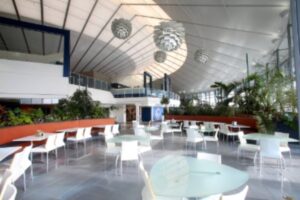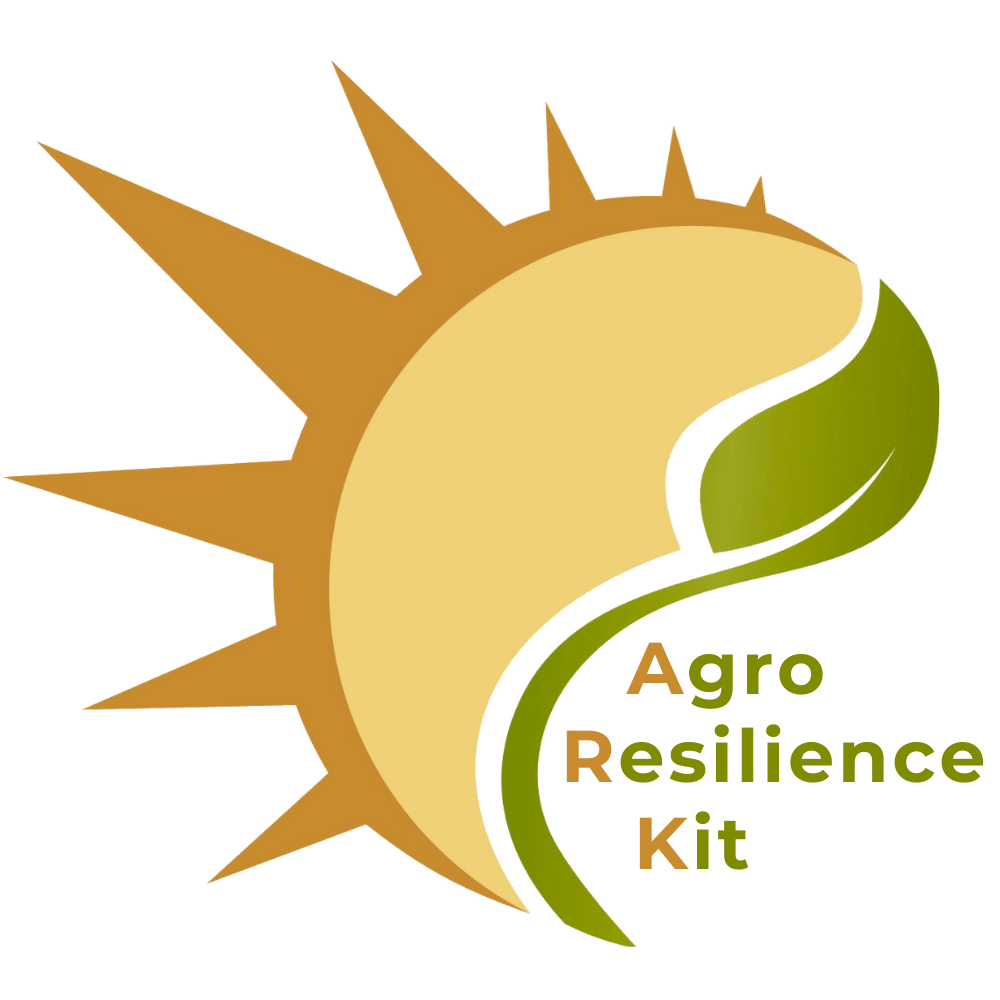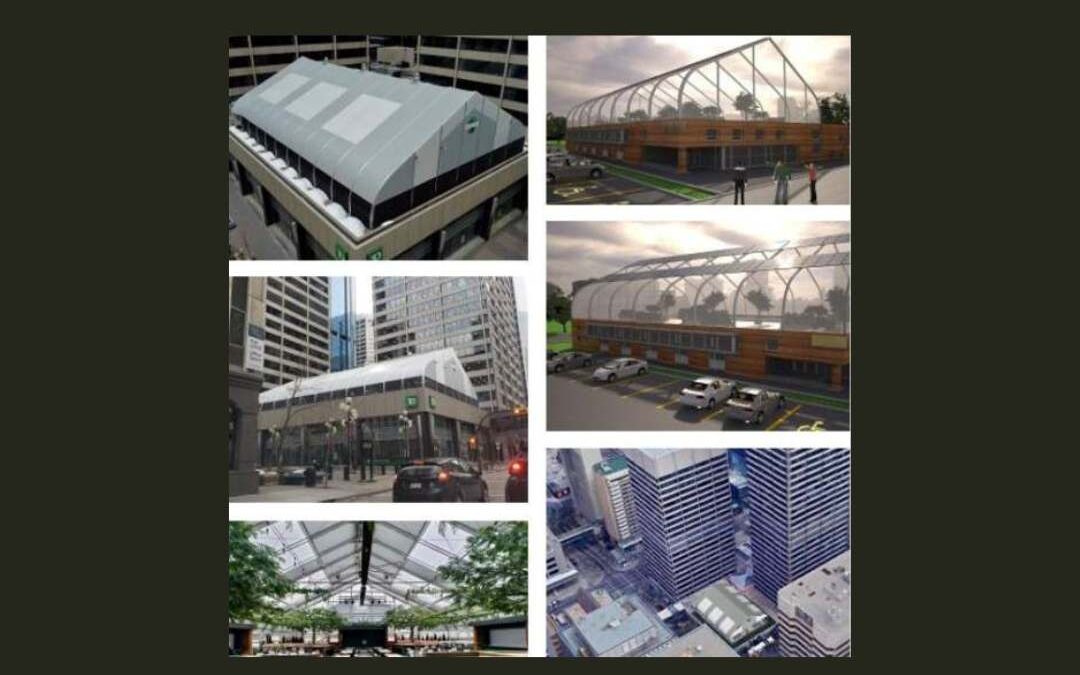In an era where climate resilience and local food security are more urgent than ever, a groundbreaking partnership between Sprung Structures and Agro Resilience Kit (ARK) is redefining what sustainable urban farming looks like. Together, they are demonstrating how energy-efficient building design and advanced aquaponics can turn business campuses and urban spaces into thriving, regenerative ecosystems.
At the heart of this initiative is a living case study located at Sprung’s headquarters in Aldersyde, Alberta—an innovation campus that blends architectural ingenuity with agricultural science to show what’s possible when sustainability is the goal from the ground up.
A Smarter Structure for Sustainable Living
Sprung Structures has long been known for its patented tensioned membrane buildings, and its Aldersyde campus exemplifies what can be achieved when high-performance materials meet visionary design. Spanning 150,000 square feet, the facility integrates R30 plant-based insulation, translucent daylighting panels, and a 30-foot-high glass wall offering natural light and panoramic mountain views.
This building isn’t just aesthetically appealing—it’s a benchmark for energy performance. Independent studies have shown:
- 45% less energy consumption compared to similar conventional buildings
- 62% lower operating costs
- 65% fewer greenhouse gas emissions
With airtight construction rated at 2.01 m³/(h.m²) (compared to the commercial minimum of 10), the building also achieves both LEED Silver and BREEAM certifications—two of the world’s most rigorous green building standards.
Integrating Food Production On-Site
 Sprung’s commitment to sustainability doesn’t stop at building design. In 2007, they added Pascal’s Café, offering chef-prepared meals for employees—made even more local and sustainable with the addition of an on-site ARK greenhouse. What started as a workplace perk quickly evolved into a model for urban agriculture.
Sprung’s commitment to sustainability doesn’t stop at building design. In 2007, they added Pascal’s Café, offering chef-prepared meals for employees—made even more local and sustainable with the addition of an on-site ARK greenhouse. What started as a workplace perk quickly evolved into a model for urban agriculture.
The ARK greenhouse not only supplies fresh produce for staff but also sells into the local community, creating a replicable model of ultra-local food systems. The message is clear: regenerative food production can be integrated into daily life—right where people work.
Why Aquaponics is the Game Changer
At the core of ARK’s growing system is aquaponics—a soil-free method of farming that raises plants and fish together in a closed-loop ecosystem. This method delivers multiple advantages over conventional hydroponics or soil agriculture:
- Eliminates synthetic fertilizers and pesticides
- Recycles water continuously, reducing water use by up to 800 L/m²/year
- Improves crop quality and micronutrient content
- Generates secondary income from fish such as tilapia, trout, and shrimp
- Provides natural thermal regulation through fish tank water
Research also shows aquaponic crops are often healthier and more nutrient-dense than those grown hydroponically, due to the beneficial microbial communities that enhance root development and nutrient uptake.
Designed for Urban Density and Vertical Growth

Urban farming isn’t just about sustainability—it’s about space. Traditional steel and glass greenhouses are heavy and often impractical for rooftops or multi-level systems. Sprung Structures’ lightweight design and high interior clearances give urban farmers the ability to scale vertically, maximizing revenue per acre.
This opens up new possibilities for food production in dense urban environments, on rooftops, and within industrial parks. When space is at a premium, verticality is a competitive edge.
Energy Solutions that Work in Any Climate
ARK’s holistic approach doesn’t stop at water and food—it extends to climate control and energy efficiency. In collaboration with Sprung’s airtight envelope, ARK deploys a suite of energy-saving technologies that allow growers to maintain optimal conditions year-round, including:
- Passive Solar Climate Batteries that store and release heat naturally
- Concentrated Solar Systems for supplemental heating
- Trigeneration Systems that produce heating, cooling, CO₂ enrichment, and electricity from a single fuel source (natural gas, biogas, or biodiesel)
The result is a low-cost, high-performance environment where crops and ecosystems can thrive regardless of external weather conditions.
Leading by Example, Scaling for Impact
The Sprung–ARK initiative at Aldersyde isn’t just a demonstration—it’s a working model with global relevance. With videos showcasing their work being shared internationally and new installations already underway, the team is proving that sustainable farming can be profitable, scalable, and adaptable to a wide range of settings.
Their commitment to showing—not just telling—what’s possible is perhaps their greatest marketing tool. Employees eat it. The community benefits from it. And cities, businesses, and developers around the world are taking note.
Final Thoughts on Regenerative Urban Farming
The future of agriculture is not in isolated rural fields—it’s in our cities, our workplaces, and our rooftops. Through the strategic integration of energy-smart buildings, closed-loop aquaponics, and renewable technologies, Sprung Structures and Agro Resilience Kit (ARK) are blazing a trail toward a regenerative, resilient future.
Whether you’re an urban planner, sustainability advocate, or entrepreneur in the ag-tech space, this case study offers a compelling roadmap: efficient, local, circular, and scalable. It’s not just farming—it’s the foundation for how we live and work tomorrow.

